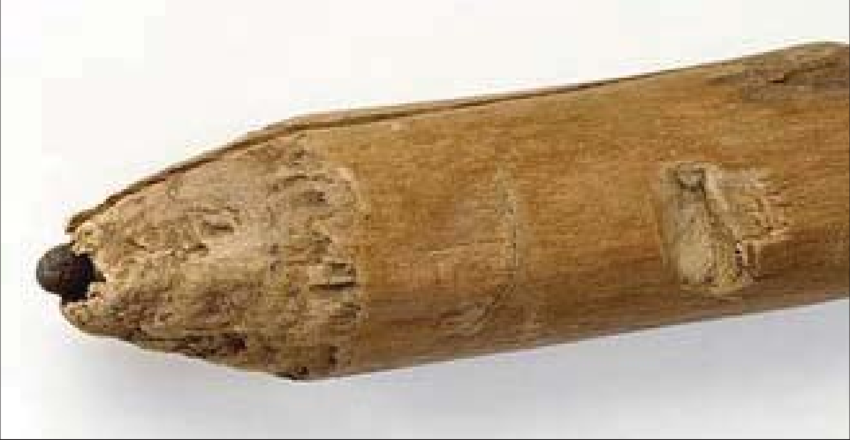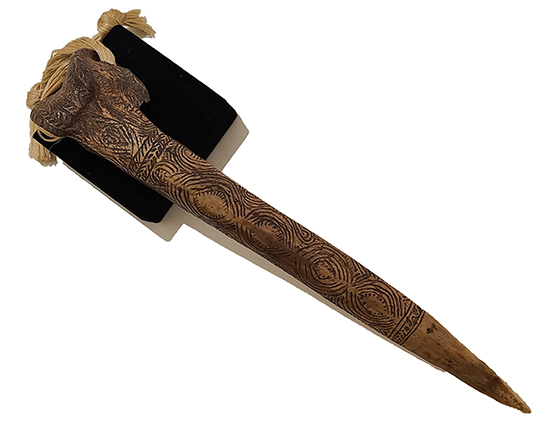While humans have a long history of tool-use, about 2.6 million years of it,1 the history of tools made from humans has a shorter timeline. Until the Upper Paleolithic (between 50,000 and 12,000 year ago), humanity hadn’t made the foray into the moral less-than-gray area of human tools. These first human tools were not forks or spoons, but use of teeth in jewelry, not finding a functional use till later on our timeline. Later, human bones were also used as retouchers, tools used to reshape and perfect other instruments. The marks left by tool retouching are distinct, meaning these bone fragments had a specific purpose-they weren’t scratched by happenstance. 2

Later on, 11,000 years ago, human bones found usage in weaponry, near Britain. But while it might sound useful enough, human bone would’ve been a bit of an inconvenience for our ancestors. It’s rarer than materials from animals, and more brittle too, needing to be harvested shortly after death before it becomes far too brittle to be worked with. This suggests a different significance outside of killing deer, more towards a sentimental or spiritual one. With over 1,000 bone weapons found in the area these weapons were not something to be written off within this ancient culture.3 Along this vein, warriors in New Guinea chose human bone for some of their daggers. Because the daggers were made of human bone, they were said to retain the strength and power of its previous owner. This made them prized objects and significant to their possessors, and a more ceremonial object than functional.4

Human spatulas however, made their foray into the cutlery scene between 200 and 400 CE, far later than the earliest instances. These artifacts came from Teotihuacan, in modern-day Mexico, a culture which has a history of the use of human remains for alternate uses. The spatulas weren’t alone in their composition, other everyday objects were also constructed from human bone. While to us, their usage might seem foreign but within the culture (considering the 5,000 bone fragments found) it was not taboo.5
While the use of human bone for tools and utensils sounds absurd to us from a modern perspective, it’s an interesting view into how our ancestors viewed death and human remains. These more liberal uses of human remains are obscure and infrequent in our history but are still part of our evolutionary timeline.
1:https://humanorigins.si.edu/evidence/behavior/stone-tools/early-stone-age-tools#:~:text=The%20earliest%20stone%20toolmaking%20developed,toolkits%20made%20by%20early%20humans.
2:https://www.sciencedirect.com/science/article/pii/S0047248410002071
3:https://www.livescience.com/stone-age-weapons-human-bone.html
4:https://www.livescience.com/62399-human-cassowary-bone-daggers.html
5:https://www.nationalgeographic.com/science/article/100810-science-archaeology-ancient-mexico-human-bones-teotihuacan

You mention briefly that the human bone spatulas “came from Teotihuacan, in modern-day Mexico, a culture which has a history of the use of human remains for alternate uses”. Why did the Teotihuacan people consider human bones a non-taboo material? What was the cultural significance of human bones?